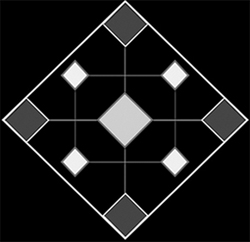Copyright law only protects the expression of ideas—not—the ideas themselves. The 1st amendment of the U.S. Constitution provides all Americans with the right to free speech (with some exceptions). When creative individuals feel the need to express themselves by utilizing parts of another creative individuals’ work, they either need to obtain that individual’s permission or can use that work legally, without obtaining clearance (based on its purpose and nature), under the fair use doctrine. The fair use doctrine enables individuals to utilize others’ work to convey their own opinions about specific subjects (encouraging free speech), while still providing the copyright holders protection of their work.
In order for this particular (free speech driven) derivative work to be considered fair use, the new work must provide additional value to the public. The work provided to the public must take the form of “commentary, criticism, news reporting, research, teaching, or scholarship.”[i] The fair use doctrine, however, can create a slippery slope when determining whether the use is actually fair or if it is simply a strict derivative from the original copyright holder’s work. This slippery slope has caused many individuals’ “fair use” claims to rebuffed and, subsequently, turned into scenarios where litigation was pursued. Since many individuals have brought claims against the fair use of their works into court, the courts developed a four-pronged balancing test (to determine whether or not the use was, in fact, fair). The test focuses on: (1) the purpose and character of the use (whether or not the new work was transformative), (2) the nature of the new work (whether or not the new work was created for commercial gain), (3) the amount of the original work that was taken to create the new work, and (4) the effect that the new work has on the potential market for or value of the copyrighted work (i.e. whether or not the new work will hinder the original from making money). Below are some of the major cases that were based on whether or not the new work created actually was considered fair use, and the courts’ respective decisions and reasoning for determining whether or not the use was fair.
Video-Cinema Fims, Inc. v. Lloyd E. Rigler-Lawrence E. Deutsch Found (2005)
This case centered on whether or not a portion (an 85 second clip from an opera performance) of the TV program called “Classic Arts Showcase,” used by a non-profit organization, was fair use. In this case, the plaintiff won even though the courts considered the use to be educational, non-commercial, and the portion taken was diminimus. The reason for the courts deciding in favor of the plaintiff was because the use could’ve potentially harmed the copyright holder (by reducing income from licensing).
Campbell v. Acuff-Rose Music (1994)
This case focused on the rap group 2 Live Crew’s parody of the song “Pretty Woman” and the use of select portions (samples) of the song being fair use or not. The courts decided in favor of the defendant (Campbell) because the work only borrowed a small portion of the original work, was transformative in nature, and was, in fact, a parody of the original work and didn’t adversely effect the copyright owner’s ability to make money off of the original song.
Leadsinger, Inc. v. BMG Music Publishing (2008)
In this case, a karaoke company paid BMG music publishing to incorporate their songs into the karaoke company’s machines. BMG, however, wanted to be compensated for the on screen utilization of the lyrics. The karaoke company refused to pay BMG based on their belief that they had the right to reproduce the lyrics based on the fair use doctrine. The courts found in favor of BMG Music Publishing because the karaoke company did not transform the work, nor did they utilize a small portion of it (they used the entire lyrical content), and it was for their own commercial gain. The courts decided that Leadsinger impinged upon BMG Music Publishing’s copyrights and ordered Leadsinger to pay for the utilization of the on screen lyrics.
Grand Upright Music, Ltc. V. Warner Bros. Records Inc. (1991)
This is one of the more prominent and one of the first (in rap) sampling cases that was brought into court. This case set the precedent for the necessity of sample clearance, prior to their use on records. Biz Markie sampled a portion of Gilbert O’Sullivan’s song “Alone Again (Naturally),” for use in his song “Alone Again,” without obtaining the proper clearance. The court’s decision, in this case, centered around the fact that Warner and Biz Markie willfully and knowingly stole parts of the original work for commercial gain (they infringed upon O’Sullivan and Grand Upright Music’s copyright of “Alone Again (Naturally)”). The courts deemed the use of the sample to not be fair use and not only granted an injunction on the album being sold but the ruling also caused Warner to pull the track off the album (so that they could continue selling it without having to pay royalties to O’Sullivan and Grand Upright Music).
Although there is potential for being sued, if an individual’s work borrows sections from an existed copyrighted work, the fair use doctrine assists with establishing guidelines for what can and can not be done with copyrighted works. The fair use doctrine helps foster creativity because it protects both the creators of the original works, as well as, can protect derivative works (that benefit society). Even though lawsuits may occur because of the work potentially being an infringement on the original copyright, the fair use doctrine assists those who want to make a statement (derived from the original copyrighted work) by providing them with legal protection. The legal protection granted by copyright law and fair use exceptions help enable free speech and foster creativity.
[i] http://en.wikipedia.org/wiki/Fair_use

